One of the things I’ve been really impressed with on the D4 is the improved focusing. And so I paid a visit to The Chilterns to photograph the Red Kites that dominate the skies there, and put the new camera to the test. The results, simply put, were nothing short of phenomenal. Having spent a lot of time with these birds in the past, I can can quite confidently say that after pointing several cameras at them over the years.
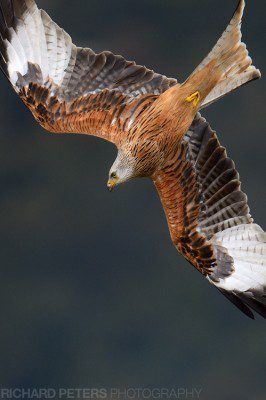
Nikon D4, 600 VR, 1/3200, f5.6, ISO 1400
This is only a quick blog post, and it’s main aim is to continue my thoughts on the D4 as I spend more time with it, and give you some real world feedback. But I was so impressed with the speed and performance of the focusing during my afternoon with the red kites I wanted to share a couple of images with you rather than save them for when I do my main review of the camera in due course. Stokenchurch in The Chilterns isn’t far from me so when my friend and fellow photographer Luke Massey said he was there, and the kites were displaying well, I couldn’t resist a quick drive over to put the D4 through it’s paces with a familiar subject. As an added bonus we bumped in to the very friendly Mike Dilger, who was filming a feature on the Red Kites for the BBCs The One Show. A thoroughly nice chap all round who was blown away by the performance the red kites were putting on, and I have to say it was a good show. In fact, one of the best I’ve witnessed in some time!
But back to business…one of my favourite spots in The Chilterns is great because you can get up on one of the hill sides meaning you are level with the birds, rather than looking up at them in the sky. Of course photographing the birds against a blue sky is easy because there is nothing else for the focus to lock on to, but tracking them in from a distance when they are surrounded by trees can be an issue until they are large enough in the frame for the camera to reliably lock on. I’ve lost count of the amount of times in the past the tree filled background snaps in to focus resulting in the bird becoming an out of focus blob, just as it gets within a reasonable range.
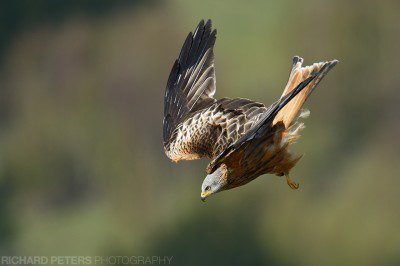
Nikon D4, 600 VR + 1.4x, 1/2000, f8, ISO 450
However, this time, with the right combination of settings I was able to maintain a much greater level of focus on the birds as the D4 opens up a whole new world of focus tracking joy! Admittedly, single point focus did prove to be quite unreliable when tracking the kites in from a distance, just as it did with the D3s, because those trees just command too much attention until the birds are large enough in the frame. But switching to Dynamic Focus, the difference between the two cameras was really quite obvious. On the D3s, I always found this slowed the camera down too much and unless the subject was filling the frame, it had tendency to lose it’s lock. But not with the D4! Using Dynamic 51 point focus mode, the camera was able to maintain focus with ease and allow me to frame the birds wherever I wanted whilst leaving the focus to do it’s job. Even adding my 1.4x TC didn’t seem to phase it in the slightest. The ease in which I was able to track a single bird from way off in the distance and keep it locked in until it filled the frame was superb. There was virtually no issues with the trees grabbing the focuses attention. Of course it would happen once in a while, because no camera is fool proof, but the rate at which it would do so was way lower than anything else I’ve experienced before.
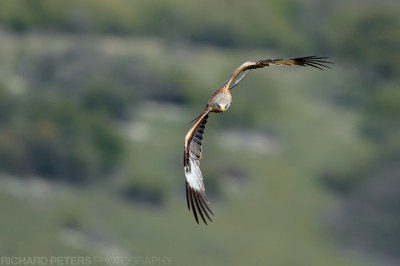
Nikon D4, 600 VR, 1/1600, f6.3, ISO 560
The real challenge though was with trying to keep the kites in focus whilst they twisted, turned and swooped through the air, and again this showed up a huge increase in performance. I tend to use Focus Priority Release a lot, and in the past with my D3s, I’ve had many times where the camera simply won’t fire as I try to track them diving through the air at the ground. Not so with the D4, here focus lock was no trouble for the camera, and in fact it turned out the only problem with getting photos was me! Of course photographers love to blame the tools for not getting the shot, but here I am admitting that the D4 was actually quite capable of out performing me on this occasion, and I was letting it down as I struggled to keep the kites in the frame as they rapidly switched from a glide to a full blown high speed dive – these birds are fast! If I’d have known the camera was going to show me up, I might have not bothered upgrading and then I could have carried on blaming the camera for my low keeper rate of frame filling high speed red kite dives. Cats out the bag now though! 🙂
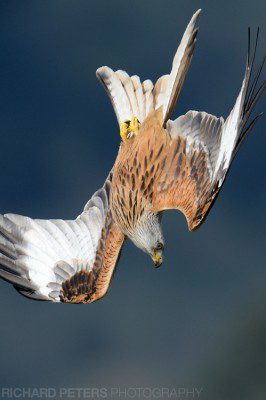
Nikon D4, 600VR + 1.4x, 1/2000, f8, ISO 720
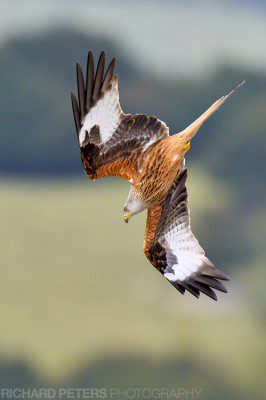
Nikon D4, 600VR + 1.4x, 1/2000, f8, ISO 900
There is absolutely no doubt in my mind, that despite it being early days with the Nikon D4, the enhanced focus has really proved itself to be far more powerful than on the older cameras. That improved glass on the focusing unit really does result in a noticeably snappier and solid system, and I think having it sensitive down to f8 makes a huge difference when you add even just a 1.4x TC to the 600 VR (giving you f5.6). I’ve said previously that just comparing specs of cameras on paper isn’t the same thing as actually experiencing them first hand, and this is certainly the case for the D4 auto focus. Sure the marketing tells you it can now work down to -2EV (or moon light), but in every day use it means so much more than that.
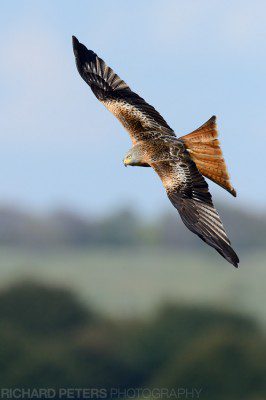
The classic red kite, above countryside








